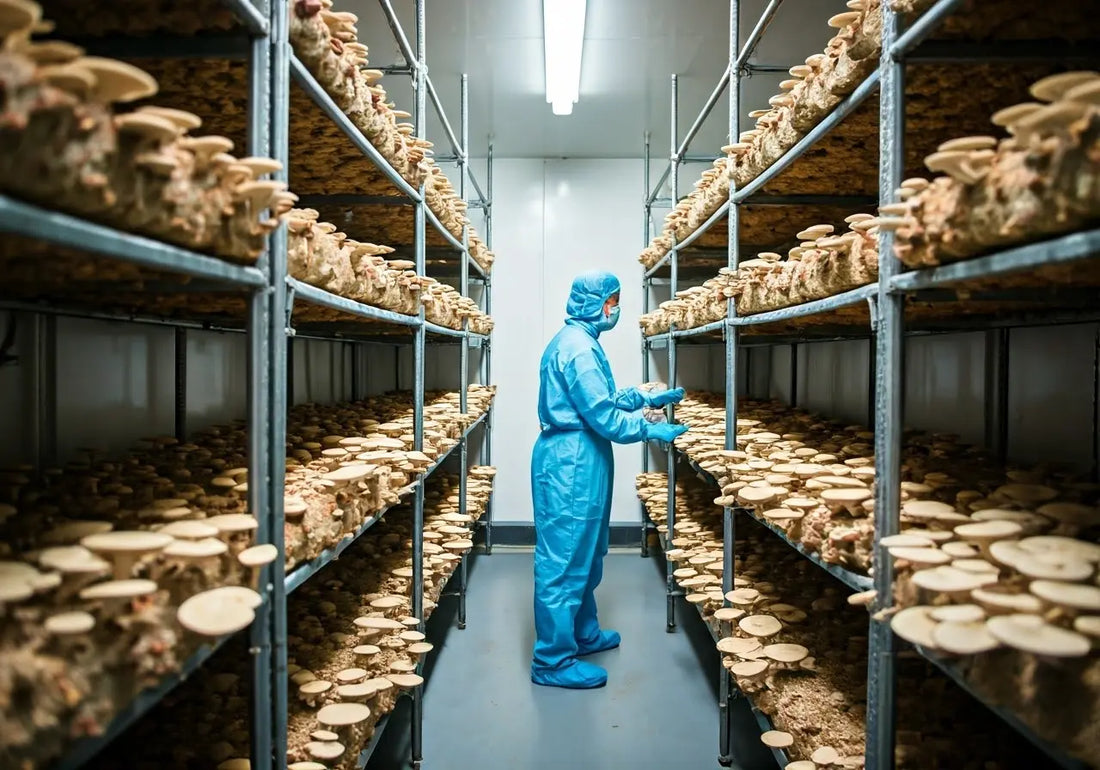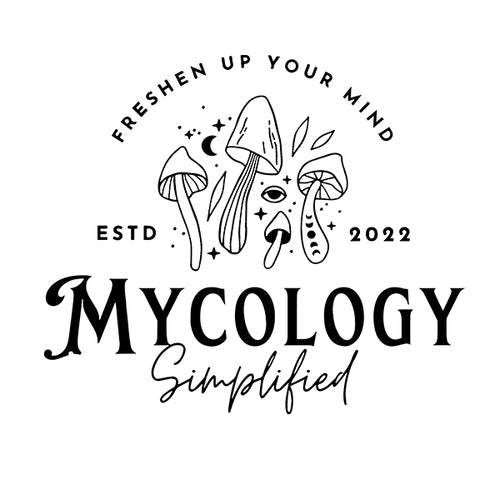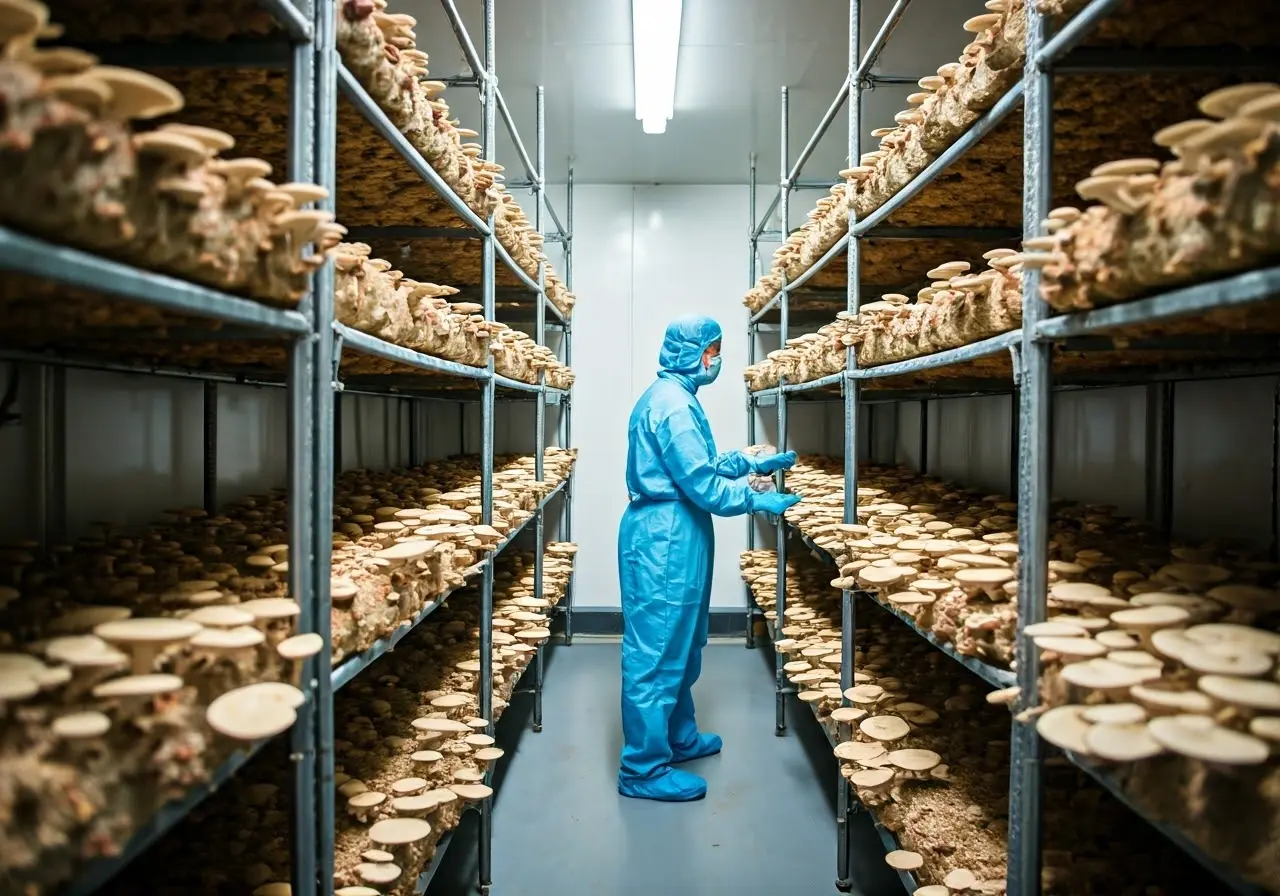
How to Maintain a Sterile Environment for Mushroom Cultivation
Share
Creating a sterile environment is crucial for successful mushroom cultivation. Contamination can sap your efforts and ruin your harvest, so understanding how to maintain hygiene and cleanliness in your growing space is key. In this blog, we’ll explore the essential steps to ensure your mushroom cultivation area stays clean and conducive to healthy growth.
Understanding the Importance of Sterility in Mushroom Cultivation
Sterility is paramount in mushroom cultivation because mushrooms, unlike many other crops, proliferate in moist environments where harmful organisms thrive. This means that a single lapse in hygiene practices can result in disastrous contamination. When contaminants infiltrate your grow area, they can outcompete your mushrooms for nutrients and space, leaving you with a disappointing, and often worthless, yield. This foundational understanding emphasizes the necessity of maintaining sterility throughout your entire growing process.
Beyond the obvious effects on yield, sterility also directly influences the quality of the mushrooms. Healthy mushrooms offer more nutritional benefits and a richer flavor profile, making them more desirable in the market. If you want to grow gourmet or medicinal mushrooms, maintaining that sterile environment is non-negotiable. Therefore, comprehending the significance of sterility sets the stage for successful cultivation.
Common Contaminants in Mushroom Cultivation
In the world of mushroom cultivation, contamination comes in various forms, and recognizing them is the first step towards prevention. The most common culprits include bacteria, molds, and unwanted fungi. For instance, bacteria like Bacillus can cause your growing medium to spoil, creating an inhospitable environment for your mushrooms. Meanwhile, molds such as Trichoderma can aggressively invade your substrate, leading to a complete crop failure if they’re not addressed quickly.
Unwanted fungi are another significant concern. They can grow quickly, especially in the humid and nutrient-rich conditions that mushrooms love. In addition to these, airborne spores from dust and contaminants can settle in your grow area, especially if it’s not properly sealed. Therefore, understanding these contaminants helps you stay vigilant, ensuring that your cultivation space is as clean as possible.
Pet dander, human hair, and even certain types of soil can introduce contaminants that may damage your grow. This highlights the need for a multi-faceted approach to sterile practices, as you must consider all potential threats. It’s this diligence that will safeguard your mushroom cultivation from unwanted adversaries.



Preparing Your Cultivation Space
The preparation of your cultivation space is critical and serves as the first line of defense against contamination. Begin by choosing a dedicated area that is not exposed to high traffic. A less traveled room limits the introduction of outside contaminants. Once you have designated that space, it’s essential to conduct a thorough cleaning. Use soap and water to scrub surfaces, followed by a sanitizing solution to kill any lingering pathogens.
After the initial cleaning, you should inspect all equipment and tools you plan to use. Items like containers, shovels, and scissors may harbor invisible threats if not properly sanitized. It’s advisable to soak tools in a diluted bleach solution for a few minutes, rinsing them well afterward. By doing so, you eliminate any potential contaminants and prepare them for a pristine growing environment.

Proper Sanitization Techniques
When it comes to maintaining a sterile environment, proper sanitization techniques are a fundamental aspect. Regular cleaning schedules should be established, and all surfaces must be disinfected frequently. Use appropriate disinfectants that are known to be effective in killing fungi and bacteria commonly associated with mushroom cultivation.
Additionally, the use of alcohol wipes for frequently touched surfaces can help in maintaining cleanliness. This includes doorknobs, light switches, and any other high-contact areas within your cultivation space. It’s vital to not overlook these small but significant areas, as they can often become hotspots for contaminants.
Another effective technique is steaming. This can be especially useful for grain spawn or any substrate that could harbor contaminants. Steaming not only kills harmful microbes but also prepares your substrate for optimal conditions. The more meticulous you are with your sanitization process, the better your chances of fostering healthy and thriving mushroom growth.
Personal Hygiene Practices for Cultivators
In addition to the physical environment, personal hygiene practices play an equally vital role in maintaining a sterile area for mushroom cultivation. As cultivators, it’s imperative to recognize that we carry potential contaminants on our bodies. Washing your hands thoroughly with soap and water before entering the growing area is essential. It’s a simple, yet powerful act that significantly reduces the transfer of spores and bacteria.
Moreover, consider wearing a lab coat or coveralls specifically designated for your cultivation tasks. This minimizes the shedding of clothing fibers and prevents contaminants from entering your growing environment. Additionally, using a hairnet or cap to cover your hair can further limit the introduction of unwanted particles.
Footwear also matters. Wearing dedicated shoes or booties can help you maintain a clean floor. If your shoes have been outdoors, it’s advisable to change them before stepping into your mushroom space. Personal hygiene goes a long way in ensuring that you are not the source of contamination. Remember, each step you take in cleanliness directly correlates to the health of your mushroom yield.
Tools and Equipment: Keeping Them Clean

Just as you care for your cultivation space, your tools and equipment are equally important when it comes to ensuring sterility. Begin by assessing all tools, including containers, mixing tools, scalpels, blades surfaces, and substrate bags. Each item should be cleaned and disinfected before use. It’s not enough to rinse them with water; a thorough scrub followed by a disinfectant rinse is necessary.
For instance, metal tools can be sanitized using a torch flame to incinerate contaminants immediately before use. Meanwhile, plastic supplies should be soaked in a disinfectant solution and then left to dry in a clean area. This method ensures that not only are the surfaces clean when you’re ready to use them, but they also remain free from contaminants when stored.
Also consider keeping an inventory of your tools to ensure none are overlooked. Each time you use them, make cleaning part of your routine. Proper upkeep will save you from headaches later on, as using unclean tools can compromise your entire mushroom cultivation effort.
Monitoring the Environment: Temperature and Humidity Control

To keep your mushroom cultivation environment sterile, you must also consider external factors like temperature and humidity. Mushrooms thrive in specific ranges of these conditions, and any deviation can create an environment conducive to contaminants. It’s vital to invest in reliable thermometers and hygrometers to constantly monitor both temperature and humidity levels.
An ideal temperature is generally between 65°F and 75°F during the growing phase, whereas humidity levels should hover around 80% to 95%. If these levels fluctuate, not only can it impact growth, but it opens the door for unwanted organisms to flourish. Implementing a constant monitoring system can alert you to any changes, allowing for immediate action.
In addition, consider using humidifiers or dehumidifiers as needed. These devices can help you maintain the specific conditions needed for successful mushroom farming. The fewer fluctuations you have, the more control you have over your crop’s health, making it a critical aspect of sterile mushroom cultivation.
Implementing a Contamination Prevention Plan
A well-structured contamination prevention plan is vital for success in mushroom cultivation. It should encompass all aspects, from personal hygiene and environmental controls to equipment sanitization. Begin by outlining specific procedures for every step of the cultivation process, ensuring everyone involved understands their roles in maintaining sterility.
Training your team or any helpers on these protocols is crucial. Hold regular sessions to review best practices and address any questions or concerns. This shared understanding ensures that everyone is on the same page when it comes to preventing contamination, leading to better outcomes.
Furthermore, keep records of your sanitation routines, environmental conditions, and any incidents of contamination. A log helps you analyze patterns and make necessary adjustments to your practices. When you have a clear plan, it leads to a more controlled and predictable cultivation experience.
Wrapping Up Your Sterile Cultivation Journey
By implementing these practices, you can significantly reduce the risk of contamination in your mushroom cultivation efforts. Remember that maintaining a sterile environment is an ongoing process that requires diligence and care. Follow these guidelines, and you’ll set yourself up for a successful harvest free from unwanted pests and diseases.

